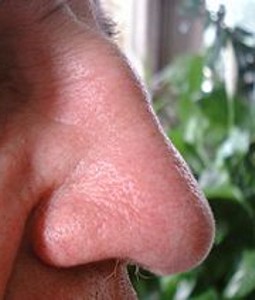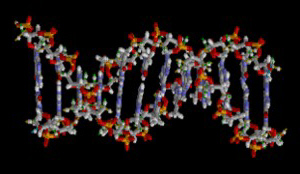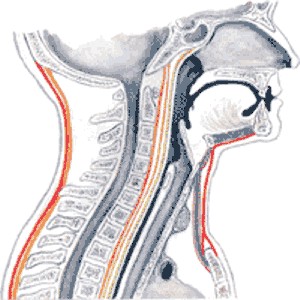.gif) VIARTIS � |
||||||
|
PARKINSON'S DISEASE |
||||||
| � � |
||||||
|
� � � � |
PARKINSON'S DISEASE NEWS � |
� � � � � � � � � � � � � � � |
||||
|
JULY 2011 ������������������ ������������������������������������������������������������������������������������������������������������������������������ 31st July 2011 - New review THE WORLD'S STRANGEST CAUSE OF PARKINSON'S DISEASE
� 28th July 2011 - News release METHAMPHETAMINES AND PARKINSON'S DISEASE People who abused methamphetamine or other amphetamine-like stimulants have been found to be more likely to develop Parkinson�s Disease. The researchers examined almost 300,000 hospital records from California covering 16 years. Patients admitted to hospital for methamphetamine or amphetamine-use disorders had a 76% higher risk of developing Parkinson�s Disease compared to those with no diagnosis. For more information go to the News release. Globally, methamphetamine and similar stimulants are the second most commonly used class of illicit drugs. For more information concerning methamphetamines click here.
� 26th July 2011 - New research RHINORRHEA IN PARKINSON'S DISEASE
Movement Disorders [2011] 26 (2) : 320-323� (Chou KL, Koeppe RA, Bohnen
NI.)�
Complete abstract It is not clearly known what causes this relationship. Nasal discharge occurring so frequently in Parkinson's Disease is not directly due to low dopamine, and a previous study found no relationship between rhinorrhea and dopamine agonists. In order to refer to this article on its own click here. � 19th July 2011 - New research NEWLY DISCOVERED� FORM OF GENETIC PARKINSON'S DISEASE American Journal of Human Genetics [2011] 89 (1) : 162-167 (Vilari�o-G�ell C, et al)� Complete abstract
American Journal of Human Genetics [2011] 89 (1) : 168-175 (Zimprich A, et al)
Complete abstract Although Parkinson's Disease uncommonly has a genetic cause or increased likelihood, the prevalence of genetic Parkinson's Disease is not known, and may be more than is assumed. This is because there are a variety of genetic causes of Parkinson's Disease, and most people are never tested for them. Therefore, there are many people with Parkinson's Disease who have unknowingly been inclined, but not inevitably, to develop Parkinson's Disease all their life. In order to refer to this article on its own click here. � 16th July 2011 - New research DUAL LAYER L-DOPA CLINICAL TRIAL RESULTS Movement Disorders [2011] Jul 13 [Epub ahead of print] (R.A.Hauser, A.L.Ellenbogen, L.V.Metman, A.Hsu, M.J. O'Connell, N.B.Modi, H.M.Yao, S.H.Kell, S.K.Gupta) Complete abstract L-dopa combined with carbidopa usually comes in two different forms : either the immediate release version (such as Regular Sinemet), which satisfies the immediate need for L-dopa, or the controlled release version (such as Sinemet CR), which avoids the excessive effects of L-dopa by spreading out the effects of the L-dopa over time.
Dual layer L-dopa combines the two types of L-dopa and carbidopa - an immediate
release form and a controlled release form, all in the same tablet. Dual layer
L-dopa is consequently being developed as a possible replacement for Sinemet and
Sinemet CR. Dual layer L-dopa (IPX054) was shown to be slightly more effective
than conventional forms of L-dopa, despite having to be taken only twice a day
instead of throughout the
� 14th July 2011 - New research A THIRD OF PEOPLE WITH PARKINSON'S DISEASE HAVE DYSPHAGIA Dysphagia [2011] 26 (1) : 92-96 (Walker RW, Dunn JR, Gray WK.) Complete abstract
A third of people with Parkinson's Disease have been found to
experience dysphagia. Dysphagia is difficulty with swallowing. This can cause
eating and drinking problems, and more seriously causes choking, which can be
fatal. For more information go to
Dysphagia. The reason why dysphagia is so
common in Parkinson's Disease is that the insufficient dopamine in Parkinson's
Disease can affect all muscles, including those needed for swallowing, of which
� 11th July 2011 - News release PARKINSON'S DISEASE FOUNDATION FUNDS ELEVEN NEW PROJECTS
The primary cause of Parkinson's Disease is the insufficient formation of dopamine in the dopaminergic neurons, which are the brain cells specialised in producing dopamine. Yet most of the projects are quite remote from this basic biochemistry of Parkinson's Disease. One of them aims at studying "the role of norepinephrine" and "the potential of norepinephrine-targeted therapies to treat" Parkinson's Disease. However, norepinephrine is not produced by the cells affected in Parkinson's Disease, and the formation or lack of formation of norepinephrine has never been shown to cause Parkinson's Disease. Another project is to assess "the role of the mitochondria in Parkinson�s" Disease using "Transparent Zebrafish". The mitochondria is the energy producing part of all brain cells. It is not directly involved in dopamine formation, and its deficiency has never been shown to cause Parkinson's Disease. Another project concerns the� "Identification of Genes for Parkinson's Disease in an Isolated Greek Community". However, genetic mutations have only ever been proven to make Parkinson's Disease more likely in a small number of people. Other studies include looking at the use of "Electrical Stimulation", "Identification of Neuroprotective Factors in Tobacco", generating "interest in Parkinson�s research and patient care among basic scientists and clinicians", and "Small Aromatic Molecules as Novel Inhibitors of Alpha-Synuclein Aggregation". In order to refer to this article on its own click here. � 3rd July 2011 - New research WHY DO PEOPLE WITH PARKINSON'S DISEASE TAKE PART IN CLINICAL TRIALS ? Parkinsonism Related Disorders [2011] Jun 27 [Epub ahead of print]� (Valadas A, Coelho M, Mestre T, Guedes LC, Finisterra M, Noronha A, Rosa MM, Sampaio C, Ferreira JJ.) Complete abstract Limited data is available regarding the motivations and concerns of people with Parkinson's Disease when participating in clinical trials. Knowledge of these factors may improve the recruitment and quality of future trials.
� 1st July 2011 - News release NATIONAL PARKINSON FOUNDATION FUNDS THREE NEW PROJECTS
1. An advanced biomarker study will examine people with Parkinson�s Disease to measure the shapes of deep structures in the brain.� The goal is to develop a biomarker (an indicator) for Parkinson�s Disease. This new technique combines advances in computing power with established and inexpensive imaging techniques. 2. Motor learning involves practicing a task followed by forming a habit - a short-cut in the brain to do a complex motion. This study will investigate this process and how it is affected by Parkinson's Disease. They will then attempt to improve motor learning by stimulating neurons using TMS (Transcranial Magnetic Stimulation).� TMS therapy has been shown to activate neurons in the brain and can be targeted to those associated with motor learning. 3. A study of the effectiveness of a treatment for sleep apnea in Parkinson's Disease. This study will evaluate the prevalence of sleep disordered breathing (SDB) and test the effectiveness of a common SDB treatment in people with Parkinson�s� Disease.� Sleep disturbance in Parkinson's Disease has been highlighted as having a measurable impact on quality of life, and also contributing to trauma and injury associated with reduced vigilance due to fatigue. For more information go to the News Release. In order to refer to this article on its own click here.�� �
��
|
||||||
| � | ||||||
.gif) |
||||||
| � | ||||||
| �2006-2011 Viartis | ||||||
| � | ||||||
| [email protected]� | ||||||
 The
world's strangest cause of Parkinson's Disease occurs in the western Pacific
Ocean, amongst the Chamorro people. The Chamorro live in the Mariana islands,
which includes the U.S. territory of Guam. The symptoms of Parkinson's Disease
occur alongside ALS and dementia. It is thought that the Chamorro people develop
the symptoms by eating a species of Flying Fox called the Mariana Fruit Bat. The
Mariana Fruit Bats consume large quantities of neurotoxic cycad seeds.
As the number of Mariana Fruit Bats has declined so has the illness.
Eating these bats is a centuries old tradition amongst the Chamorro people. The
Chamorro consider it a culinary delicacy. Served at weddings, fiestas, and
birthdays, the etiquette of bat-eating and preparation involves rinsing off the
outside of the animal like you would a cucumber and then tossing it in to
boiling water. The bats are then served whole in coconut milk and are consumed
in their entirety. Meat, internal organs, fur, eyes, and wing membranes are all
eaten. In order to refer to this article on its own
The
world's strangest cause of Parkinson's Disease occurs in the western Pacific
Ocean, amongst the Chamorro people. The Chamorro live in the Mariana islands,
which includes the U.S. territory of Guam. The symptoms of Parkinson's Disease
occur alongside ALS and dementia. It is thought that the Chamorro people develop
the symptoms by eating a species of Flying Fox called the Mariana Fruit Bat. The
Mariana Fruit Bats consume large quantities of neurotoxic cycad seeds.
As the number of Mariana Fruit Bats has declined so has the illness.
Eating these bats is a centuries old tradition amongst the Chamorro people. The
Chamorro consider it a culinary delicacy. Served at weddings, fiestas, and
birthdays, the etiquette of bat-eating and preparation involves rinsing off the
outside of the animal like you would a cucumber and then tossing it in to
boiling water. The bats are then served whole in coconut milk and are consumed
in their entirety. Meat, internal organs, fur, eyes, and wing membranes are all
eaten. In order to refer to this article on its own
 It
is claimed that the increased likelihood is due to the ability of
methamphetamines to cause Parkinson's Disease, but no evidence has been provided
of this. A previous study did not prove that methamphetamines had a clearly
negative effect on dopamine. For more information go to the
It
is claimed that the increased likelihood is due to the ability of
methamphetamines to cause Parkinson's Disease, but no evidence has been provided
of this. A previous study did not prove that methamphetamines had a clearly
negative effect on dopamine. For more information go to the
 Over
two thirds (68%) of people who had Parkinson's Disease reported nasal discharge.
There was no relationship with age or severity of symptoms. The nasal discharge
of over half (52%) of people with Parkinson's Disease was accompanied with light
headedness. The symptom of lightheadedness is uncommon in people who do not have
Parkinson's Disease, occurring in less than 1 in 10. Another study found
similar results. For more information go to the
Over
two thirds (68%) of people who had Parkinson's Disease reported nasal discharge.
There was no relationship with age or severity of symptoms. The nasal discharge
of over half (52%) of people with Parkinson's Disease was accompanied with light
headedness. The symptom of lightheadedness is uncommon in people who do not have
Parkinson's Disease, occurring in less than 1 in 10. Another study found
similar results. For more information go to the
 The
VPS35 gene produces a protein called VPS35 (Vacuolar protein sorting-associated
protein 35). The function of VPS35 is known, but it is not explained how this
function not taking place causes Parkinson's Disease symptoms. Unlike other
genetic causes of Parkinson's Disease, VPS35 appears to eventually cause
Parkinson's Disease symptoms rather than make them more likely.
The
VPS35 gene produces a protein called VPS35 (Vacuolar protein sorting-associated
protein 35). The function of VPS35 is known, but it is not explained how this
function not taking place causes Parkinson's Disease symptoms. Unlike other
genetic causes of Parkinson's Disease, VPS35 appears to eventually cause
Parkinson's Disease symptoms rather than make them more likely.  day.
For more details go to the
day.
For more details go to the
 there
are many. In Parkinson's Disease dysphagia has been found to be unrelated to
age, gender or duration of Parkinson's Disease. However, dysphagia is very
common in those people with sever motor skills.
Although Parkinson's Disease underlies the problem in many cases, there are
practical means of dealing with dysphagia. The recently published "Swallow
Safely", which
is "A caregiver's guide to recognition, treatment, and prevention"
deals with the problem, particularly as it relates to Parkinson's Disease.
there
are many. In Parkinson's Disease dysphagia has been found to be unrelated to
age, gender or duration of Parkinson's Disease. However, dysphagia is very
common in those people with sever motor skills.
Although Parkinson's Disease underlies the problem in many cases, there are
practical means of dealing with dysphagia. The recently published "Swallow
Safely", which
is "A caregiver's guide to recognition, treatment, and prevention"
deals with the problem, particularly as it relates to Parkinson's Disease.
 The
Parkinson�s Disease Foundation has announced awards totalling more than $1
million for 11 novel research projects, which they claim are "designed to
understand the cause(s) of and find a cure for Parkinson�s disease." The
research ranges from basic science investigations� to studies of
potential new therapies and symptomatic relief. For more
information go to the
The
Parkinson�s Disease Foundation has announced awards totalling more than $1
million for 11 novel research projects, which they claim are "designed to
understand the cause(s) of and find a cure for Parkinson�s disease." The
research ranges from basic science investigations� to studies of
potential new therapies and symptomatic relief. For more
information go to the
 When
asked for their reasons the main reasons for participating in clinical trials
were : to help the advance of science (63%), to gain access to a better
treatment (56%), and to benefit others (51%). The major concerns were : the risk
of adverse events (49%) and the negative effects of treatment (35%). 90%
reported they had understood the informed consent. Only 64% understood what the
When
asked for their reasons the main reasons for participating in clinical trials
were : to help the advance of science (63%), to gain access to a better
treatment (56%), and to benefit others (51%). The major concerns were : the risk
of adverse events (49%) and the negative effects of treatment (35%). 90%
reported they had understood the informed consent. Only 64% understood what the
 The
National Parkinson Foundation has awarded more than a million dollars for
three Parkinson's Disease projects : (1) an advanced biomarker study for
indicating Parkinson's Disease, (2) a
The
National Parkinson Foundation has awarded more than a million dollars for
three Parkinson's Disease projects : (1) an advanced biomarker study for
indicating Parkinson's Disease, (2) a